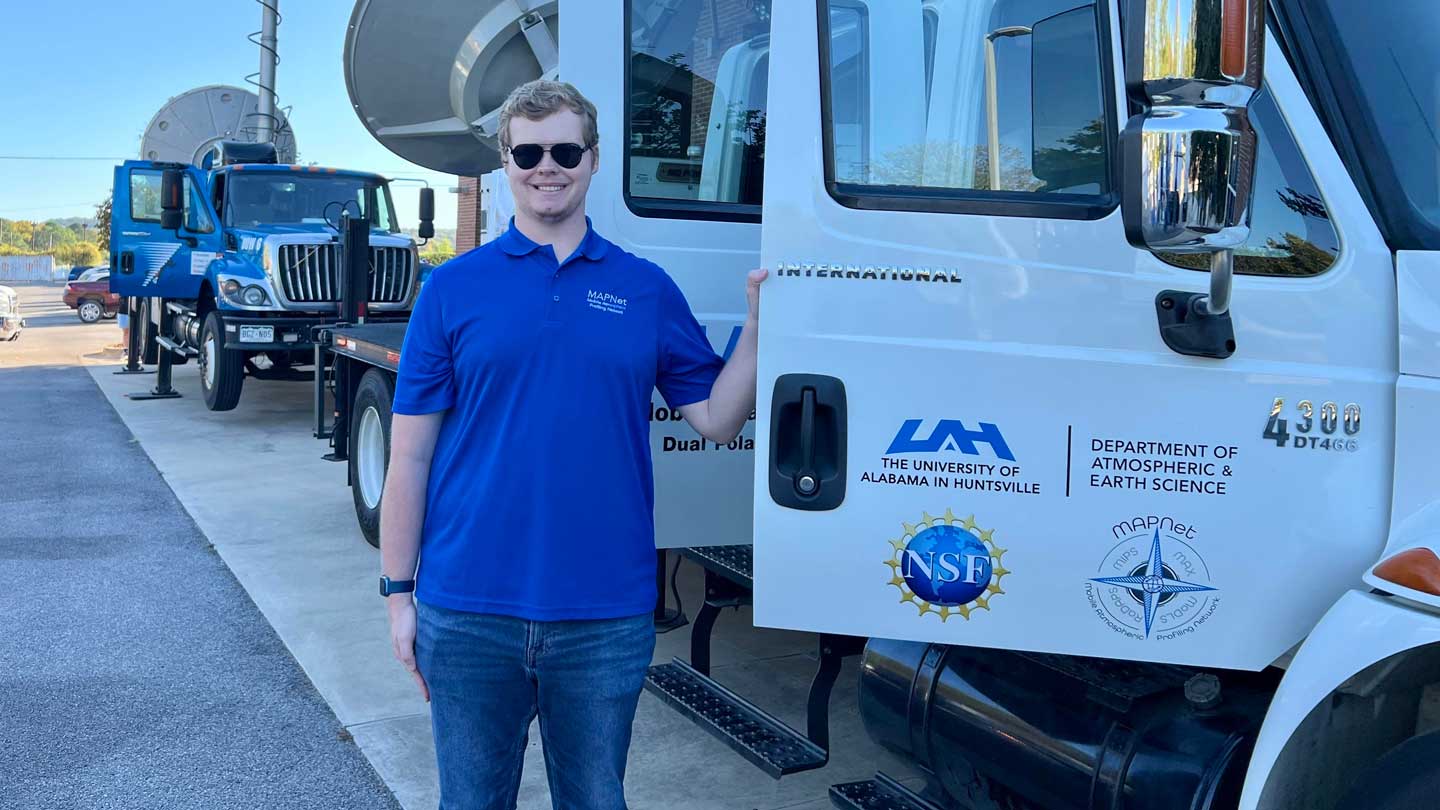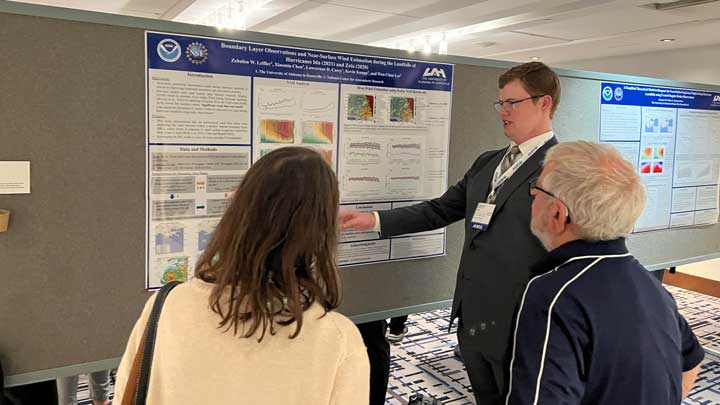
Zeb Leffler stands in front of UAH’s Mobile Alabama X-Band Radar (MAX).
Courtesy Zeb Leffler
A paper authored by University of Alabama in Huntsville (UAH) graduate student Zeb Leffler has been published in the Geophysical Research Letters, a journal of the American Geophysical Union (AGU), showcasing the university’s growing impact on advancing hurricane research. The student’s master’s research addresses a long-standing challenge in meteorology: improving the accuracy of hurricane wind estimates after landfall. Knowing the exact strength of surface winds is crucial for effective risk communication and post-storm recovery efforts.
The achievement marks an important milestone, not only for Leffler, but also for UAH’s Earth System Science Center (ESSC) and Department of Atmospheric and Earth Science (AES). As a graduate research assistant at UAH’s AES Department and ESSC, Leffler is contributing directly to cutting-edge hurricane science under the guidance of Dr. Xiaomin Chen, an assistant professor in AES and principal investigator in the ESSC. UAH is a part of The University of Alabama System.
During hurricane landfalls, a nascent, shallow layer forms over land in response to the abrupt change of surface friction. This shallow layer is detached from the layer above. The study marks a significant advancement in understanding near-surface wind behavior during hurricanes – a critical factor for forecasting and community preparedness. “I am proud to do this work, since it truly matters to improving hurricane forecasting and saving lives,” Leffler says.

Zeb Leffler presents his hurricane research at the 2025 AMS International Conference on Radar Meteorology.
Courtesy Zeb Leffler
“Previous studies didn’t treat this shallow layer separately when estimating surface winds using radar winds aloft and reported a notable weak bias,” Leffler says. The study improves the radar wind retrieval technique to resolve the fine vertical wind structure within the shallow layer. Leffler’s research demonstrates that using the retrieved winds within the shallow layer significantly improved the accuracy of surface wind estimation.
Reliable and accurate wind estimates close to the ground are crucial for forecasting, emergency management and community safety. This data gives forecasters the information needed to make faster and better decisions during a hurricane, and also help improve future forecast models.
“The impact of this study is beyond just an observational application,” Chen says. “It improves our understanding of the near-surface wind profile in one of the most hazardous conditions, and the findings can serve as guidance for future development of surface wind forecast products, ultimately contributing to saving lives and properties.
This kind of innovation, led by a graduate student, is a testament to the research environment at UAH, where students actively contribute to solving real and urgent scientific problems.
Looking ahead, Leffler plans to expand his research to include more extreme hurricane events – such as Hurricane Laura (2020), which brought hurricane-force winds far inland – and to incorporate radar platforms with lower antenna heights to capture even finer detail near the surface.